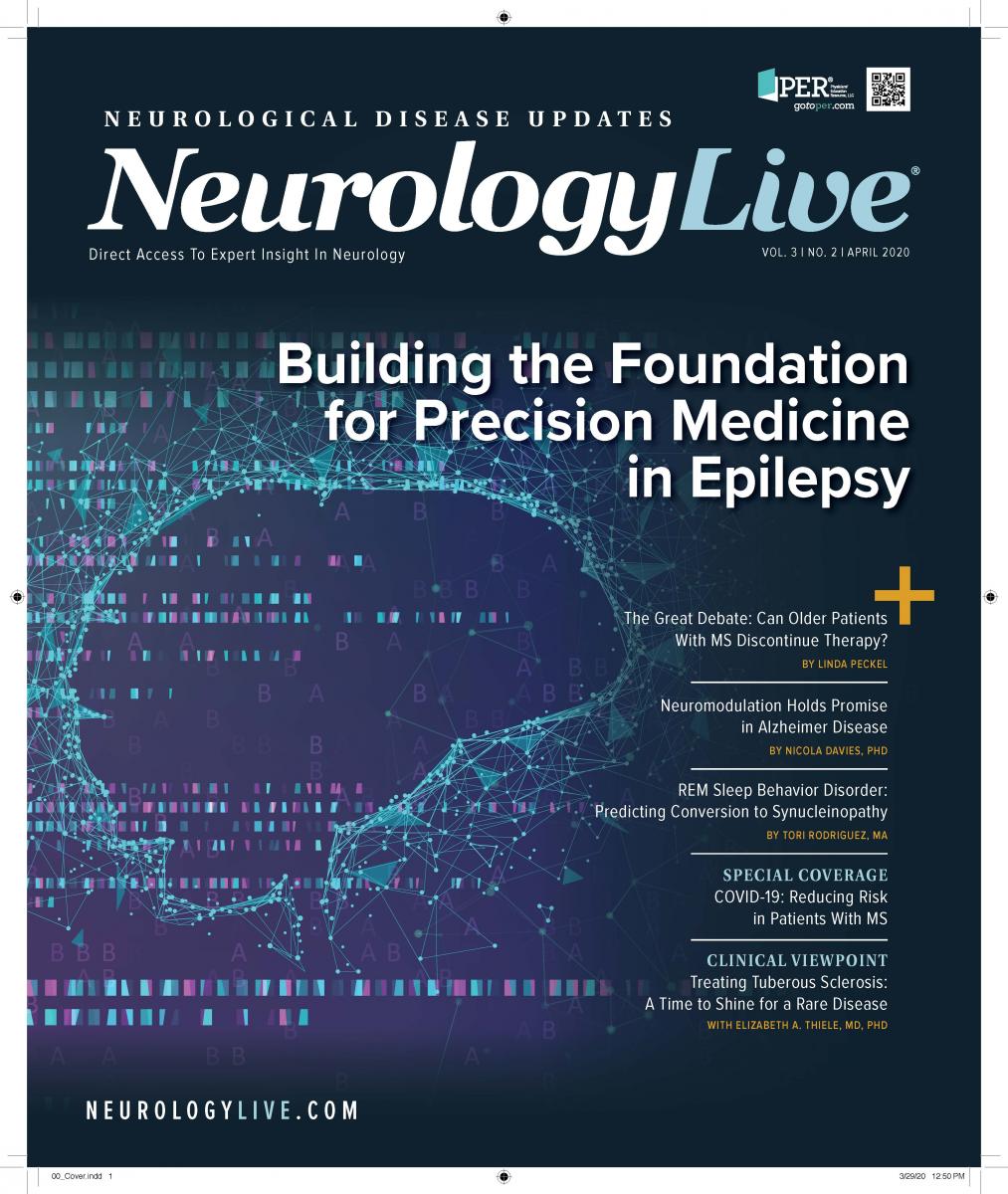Publication
Article
NeurologyLive
The Evolving Landscape of Migraine Treatment
Author(s):
The assistant professor of Neurology, Concussion and Headache Medicine divisions, Mayo Clinic, Scottsdale, Arizona discussed the evolving migraine treatment landscape and how they have been incorporated into her practice.

Amaal J. Starling, MD
Over the past 18 months, the arsenal of treatment options for migraine and other headache disorders has multiplied, providing hope for the scores of patients who previously had inadequate control over their disease. Now exploration of novel pathways has opened the door to the development of therapies that act on the biological anchors of migraine and, as some specialists have put it, have begun to blur the lines between acute and preventive treatment.
Amaal J. Starling, MD, an assistant professor of neurology in the divisions of Concussion and Headache Medicine at Mayo Clinic in Scottsdale, Arizona, has witnessed the impact of these new developments first hand. In a conversation with NeurologyLive®, she recalled that she has a queue of patients awaiting the arrival of several therapies in development and another line of patients already reaping the benefits of available treatments.
Starling shared her experiences with these new devices, therapies, and developments and provided insight into what she is looking forward to seeing in the migraine armamentarium.
What has it meant for you to have so many new therapeutic modalities available in your toolkit?
Since May 2018, when the FDA approved the first calcitonin gene-related peptide (CGRP) monoclonal antibody for prevention, we’ve been able to help so many more patients, and even before that, when we started getting FDA clearance on the multiple neuromodulation devices, we were able to address migraine disease for individuals who have found other medications ineffective. [We have also been able to help] patients who have poorly tolerated other preventive and acute treatment options, even if they found them to be effective but were unable to tolerate them because of adverse effects.
In addition to exploring new mechanisms that may be underlying different migraine pathways, having access to devices and oral treatment options that are blurring the lines between acute and preventive treatment is really exciting. It’s confusing [to tell] patients, “OK, this is what we use for prevention. And this is what we use for as-needed.” With some of the neuromodulation devices, I like that we can use 1 device for both acute and preventive treatment. I believe that is the direction that these CGRP antagonists will also follow. The gepants, not in the immediate future but in the next couple of years, may obtain FDA approval for prevention as well as acute treatment, so those may be medications that we can recommend as needed. If [patients] need to use it daily in the beginning, that’s OK. It’ll work from a preventive perspective. And it’ll also work as needed.
Have any particular therapies stood out as particularly promising?
The first 3 FDA-approved CGRP monoclonal antibodies have been wonderfully useful in our headache practice. Mayo Clinic Scottsdale is a tertiary headache clinic, and the realist in me didn’t expect that the medications would work as well in our very medically complicated and very refractory population as they did in clinical trials. But we’ve had excellent results that mimic those of the clinical trials; regardless of which monoclonal antibody [we use], about 50% of patients will be responders, and that’s what we’ve seen even in our very complicated patient population.
We’ve also had great tolerability with all those monoclonal antibodies. It’s been beautiful to see that, to really change the lives of some of these patients, especially the ones who were super-responders and had a greater than 75% remission of their migraine attacks. That was awesome. I’m also excited about the recent FDA approval of eptinezumab, which is the first CGRP monoclonal antibody infusion, especially given the reported data about onset of efficacy. We are currently working on the logistics of using this infusion therapy for our patients in clinic, but I am hoping to initiate this treatment modality very soon.
The recent FDA approval of lasmiditan is going to be very helpful because it will help us address that patient population who has not responded to triptans. Thirty percent to 40% of patients who receive triptan medications do not get a good response, whether the reason is inefficacy or poor tolerability. I hope this will be an option for them and for the patient population who cannot use triptan medications because of a history of heart attack or stroke or significant peripheral cardiovascular or cerebrovascular disease. Also, ubrogepant received FDA approval for acute treatment in December 2019, and we have just started prescribing it to patients. It is too early to tell whether its efficacy is similar to what has been published in clinical trials, but patients do seem to be tolerating it without adverse effects. It’ll be interesting to see whether ubrogepant, which is a CGRP small molecule receptor antagonist, is effective in the setting of CGRP monoclonal antibodies to either the ligand or the receptor. These are unanswered questions, but we have been prescribing to those particular patients, so we should have some clinical observations soon.
As for the neuromodulation devices, we’ve already been using Cefaly, sTMS mini, and gammaCore. Usually, when we do use the neuromodulation devices, we use them in combination with either injectables or oral medications. Some patients would rather not use any type of medication, whether it be injectable or oral, and for them, we use solely neuromodulation.
The lovely thing about the neuromodulation devices is that they come with very few contraindications. In fact, some of the devices, such as the sTMS mini, have recently received label extensions to include the adolescent population, and some case reports have already been published on the sTMS mini in pregnant patients. So these are options we can use in our patients who are medically vulnerable for several reasons. The FDA [also recently cleared] the remote electrical stimulation patch to be used on the arm. It seems to be another effective as-needed treatment option for patients either in addition to their regimen or by itself.
Outside of CGRP, what ongoing developments have caught your attention?
It’s really important for not just headache specialists but also general neurologists and primary care providers, as well as patients, to understand that this is just the beginning. That’s really important because I’ve had patients who have come to me [saying,] “CGRP monoclonal antibodies and antagonists—that’s the last resort. If those things fail me, then there’s nothing else that’s going to ever work for me.” That is not true. This is just the beginning of the development of more disease-specific, mechanism-based targeted treatment options.
[Clinicians should know that] clinical trials involving other novel targets are ongoing. One of them is the pituitary adenylate cyclase-activating polypeptide, or PACAP, which is going to be another arena in which we may have monoclonal antibodies as well as poten-tially small molecule antagonists that will target that pathway. That’s important because of the heterogeneity, from a genetic perspective, of the patient population with migraine. It’s going to require that we have multiple mechanisms that we’re targeting with our different treatment options. And the CGRP pathway is one of them. The PACAP pathway is going to be another one, and [investigators will continue to identify] multiple other pathways.
Much research is currently looking at different types of neuro-peptides and hormones that would affect the origination [point] of that spontaneous migraine attack. We’ve seen imaging studies that demonstrate that the hypothalamus lights up first in a spontaneous migraine attack, and we do not have novel targets for the hypothalamus yet. Those are things that we need to continue to develop. As we learn more about spontaneous migraine attack, we’re going to be able to identify those windows of opportunity and those novel drug targets, and now we have the technology. Once we identify them, we can create not just a small molecule antagonist for it but also a mono-clonal antibody.
We’re not anywhere near the end. We’re not even in the middle. We’re just at the beginning. And I expect that over the next 10 to 20 years, we’re going to have so many more therapeutic options for our patient population.
What would you consider to be the biggest challenge remaining in this space?
Two things come to mind. One is going to be individualized medicine. I dream about the day when, based on clinical characteristics or other types of biomarkers—such as a blood biomarker or an imaging biomarker or some sort of physiology study biomarker—I will be able to identify which patient is going to respond to which medication. Right now, it is a little trial and error, but we’re working toward it.
The American Registry for Migraine Research, which the American Migraine Foundation sponsors, is something that will help with that. It’s collecting large amounts of clinical data and imaging data, as well as blood biomarker and genetic data, from large populations of patients who are visiting different headache clinics. Once we have all those data, we’ll be able to do artificial intelligence work, looking at big data, mining, and figuring out those predictive markers that will help us determine which medication needs to go to which patient. From a scientific level, I think that that’s the next big hurdle that we really need to approach from a clinical and, really, public health perspective.
However, the biggest barrier is still the stigma of migraine—not just within the lay public but also within the patient population themselves. We need to continue to work on the internalized stigma that results from the external stigma that patients have experienced their entire lives, as well as the stigma of patients with migraine that exists within the health care provider arena, among primary care providers and general neurologists. From a public perspective, we need patients to see a headache specialist or a neurologist. Study results still show that even among people with chronic migraine, 50% aren’t even presenting to a physician about their symptoms because they think it’s just a headache and something they just have to deal with. And that’s just not true. We have options available for them once they see the physician. They need to get the right diagnosis rather than just being told that they have tension-type headaches or stress headaches and that they need to just relax more, get a massage, or drink more water. After that, we need to make sure that our health care providers can not only properly diagnose but also apply the standard-of-care treatment options and refer to a headache specialist when appropriate. On that level, we need many more available head-ache specialists. There are 47 million people in the United States with migraine disease, and it’s simply unacceptable that there are only 564 board-certified headache specialists nationally.





